



Table of Contents
- Introduction
- History and Cultural Significance
- Manufacturing Process
- Types of Athangudi Tiles
- Features of Athangudi Tiles
- Comparison with Normal Tiles
- Applications in Interior Design
- Maintenance of Athangudi Tiles
- Conclusion
- Faq's
Introduction
With rising awareness about including sustainability in daily practices, homeowners are increasingly seeking to add sustainability along with unique design elements in their homes. As a result, Athangudi tiles have amassed huge popularity due to their traditional craftsmanship which embodies both sustainability and unique design
Athangudi tiles which reflect the cultural heritage of Chettinad region, can be used in various applications, from flooring to wall accents, and are available in a multitude of colors and patterns, including floral, geometric, and abstract designs. The vibrant hues and intricate motifs reflect the cultural heritage of the Chettinad region, making them not just a flooring option but a statement piece that adds character and elegance to any space. In this article, we will look at the history of Athangudi Tiles, the various types available, unique manufacturing process and how it differs from regular tiles.
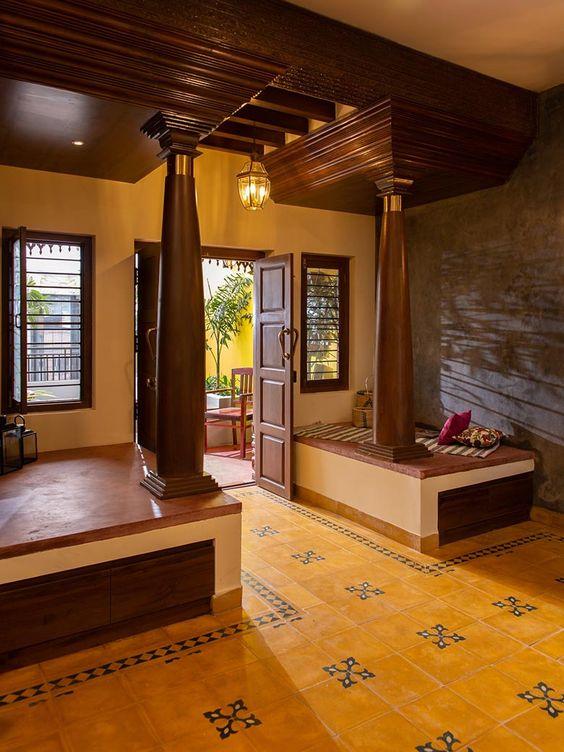 Athangudi Tiles, Pinterest
Athangudi Tiles, Pinterest
History and Cultural Significance
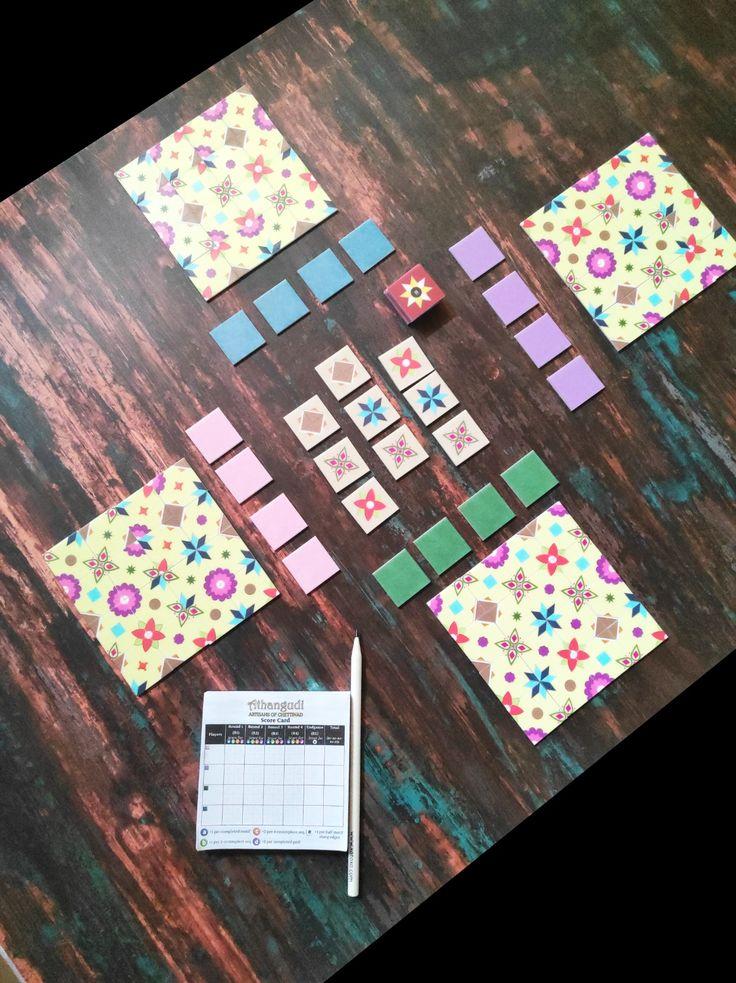 Pinterest
Pinterest
The history of Athangudi tiles dates back over 200 years, deeply rooted in the affluent Chettiar community of Tamil Nadu. This unique tile-making tradition emerged as a local alternative to the expensive imported tiles that adorned the grand homes of the Chettiars, who were known for their extensive trade networks and opulent lifestyles. During the colonial period, these affluent families sought to incorporate Western aesthetics into their architecture, which included importing tiles from countries like England, Germany, and Italy. However, the challenges associated with replacing or repairing these imported tiles due to their high cost and the complexity of sourcing them led to the birth of Athangudi tiles.
Recognising the need for a more sustainable and accessible flooring option, local artisans began experimenting with traditional tile-making techniques. They drew inspiration from the intricate designs of Victorian tiles, adapting them to create a product that was not only beautiful but also practical for Indian homes. This innovative approach allowed the Chettiar community to maintain their luxurious living standards while supporting local craftsmanship.
The craftsmanship of Athangudi tiles has been meticulously passed down through generations, with artisans in Athangudi perfecting the art of tile-making. Each tile is handcrafted using locally sourced materials, such as river sand, cement, and natural oxides, which contribute to their eco-friendly profile. The production process involves pouring a mixture into molds placed on glass surfaces, resulting in unique designs that reflect the rich cultural heritage of the region.
The significance of Athangudi tiles extends beyond their aesthetic appeal; they are also a vital part of the local economy. The Tamil Nadu government has recognized the importance of this craft, designating Chettinad as a heritage town to preserve its unique architectural style and the artisanship of Athangudi tiles. This recognition not only helps sustain the traditional craft but also promotes tourism and cultural appreciation in the region, ensuring that the legacy of Athangudi tiles continues to thrive for future generations.
Manufacturing Process
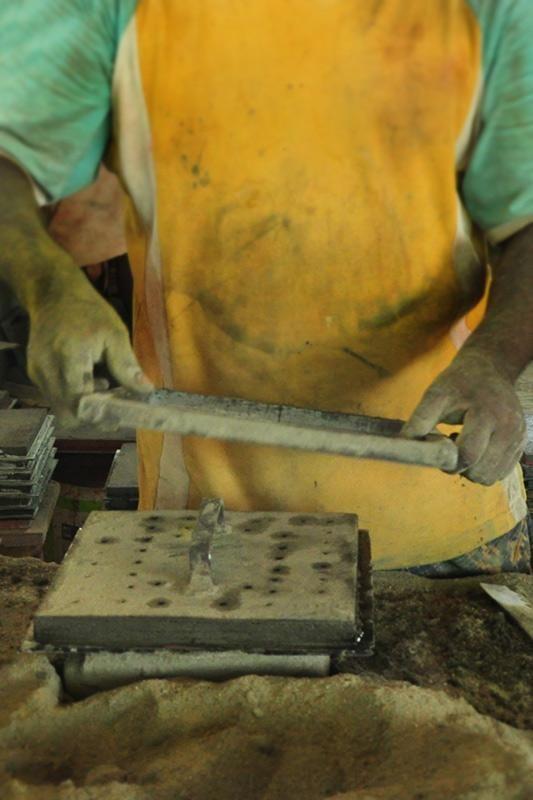 Athangudi Tile Making Process, Pinterest
Athangudi Tile Making Process, Pinterest
The production of Athangudi tiles is a meticulous and labor-intensive process that emphasises traditional craftsmanship passed down through generations. Each step is carried out with utmost care and precision, ensuring the creation of these unique and durable tiles.
The process begins with the preparation of the raw materials. Locally sourced river sand,cement, and natural oxides are meticulously combined to create the base mixture for the tiles. The proportion of these ingredients is crucial, as any imbalance can lead to cracks or imperfections in the final product. The experienced artisans of the Chettinad region have mastered the art of mixing the components in the perfect ratio to achieve the desired results.
Next, the artisans pour the mixture into molds placed on a glass surface. These molds are specially designed to create intricate patterns and designs. The artisans use stencils or freehand techniques to craft the desired motifs, which can range from simple geometric patterns to elaborate floral designs. The use of stencils allows for the creation of precise and consistent patterns, while freehand techniques showcase the artisans' exceptional skills and creativity.
Once the design is set, the tiles undergo compaction. A wet mortar mixture of cement, sand, and water is poured into the mold, filling the gaps and providing a sturdy base for the tile. The tiles are then compressed using a plate, ensuring a smooth and even surface.
The curing process is crucial for the durability and strength of the tiles. After compaction, the tiles are left to dry in the sun for a few hours. They are then immersed in water for a minimum of 21 days, allowing the cement to fully harden and the tiles to gain their characteristic strength and resilience.
Finally, the tiles are removed from the molds and dried in the sun once again. Any rough edges are carefully smoothed out using sandpaper, and the finished tiles are stacked and stored for distribution.
This meticulous handmade process ensures that no two Athangudi tiles are exactly alike, adding to their charm and uniqueness. Each tile is a testament to the skill and dedication of the artisans who create them, preserving a centuries-old tradition while adapting to modern design preferences.
Types of Athangudi Tiles
The patterns found on Athangudi tiles can be categorised into several styles, catering to various design preferences:
Floral Designs
These tiles often feature intricate floral motifs, which can range from bold, vibrant patterns to more subtle, delicate designs. Floral tiles are perfect for creating a traditional aesthetic and can serve as a stunning focal point in any room.
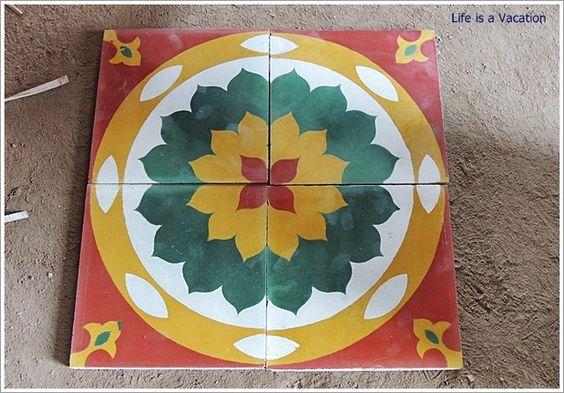
Geometric Patterns
Geometric designs add a modern twist to the classic charm of Athangudi tiles. These patterns can vary from simple shapes to complex arrangements, providing a stylish and understated elegance that complements contemporary interiors.
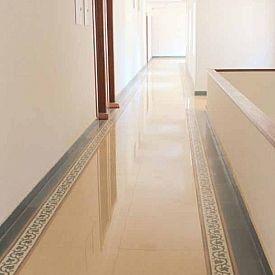
Custom Designs
Artisans are also able to create custom designs based on client specifications, allowing for personalization and creativity. This flexibility makes Athangudi tiles suitable for a wide range of applications, from residential homes to commercial spaces.
Cultural Motifs
Many Athangudi tile designs incorporate traditional Indian motifs, reflecting the rich cultural heritage of the Chettinad region. These motifs often tell stories or symbolize various aspects of local culture, making each tile not just a decorative element but also a piece of history. The cultural significance of these designs adds depth to their aesthetic appeal, allowing homeowners to connect with the artistry and traditions of the region.
Features of Athangudi Tiles
Unique Patterns and Designs
Athangudi tiles are known for their rich color palette, which typically includes shades of red, blue, emerald, mustard, and grey. The patterns can be intricate or simple, catering to various design preferences. Some unique features of these tiles include:
Rich Color Palette
Athangudi tiles are known for their striking color palette, which typically includes shades of red, blue, emerald, mustard, and grey. These vibrant hues are achieved through the use of natural oxides mixed with cement, resulting in colors that not only stand out but also become more vibrant with age and use. The tiles' ability to maintain and even enhance their color over time adds to their appeal, making them a lasting choice for homeowners.
Handcrafted Quality
One of the most distinctive features of Athangudi tiles is their handcrafted quality. Each tile is made individually by skilled artisans, ensuring that no two tiles are exactly alike. This handmade approach not only adds a personal touch to each piece but also allows for unique variations in design and color. The artisans often employ both template-based patterns and freehand techniques, showcasing their creativity and expertise. This craftsmanship results in tiles that are not just functional but also works of art.
Comparison with Normal Tiles
Athangudi tiles differ significantly from standard ceramic or porcelain tiles in several ways:
Feature | Athangudi Tiles | Standard Tiles |
Production Method | Handmade, resulting in unique designs | Mass-produced, leading to uniformity |
Eco-Friendliness | Made from natural materials, free from harmful chemicals | Often made with synthetic materials and chemicals |
Durability | Becomes shinier and more attractive with age | May fade and wear out over time |
Cultural Significance | Rich cultural heritage and historical significance | Generally lacks cultural depth and significance |
Finish Quality | Smooth finish due to preparation on glass surfaces | Finish quality can vary; may not be consistently smooth |
Design Variety | Limited alike designs and patterns, each tile unique | Wide variety of uniform designs readily available |
Price Range | No fixed price range; varies based on design and craftsmanship | Fixed price range based on material and design |
Installation Cost | Higher handling and installation costs due to labor-intensive process | Lower installation costs due to standardization |
Non-Slip Properties | Non-slippery surface, suitable for various applications | Can be slippery, especially polished surfaces |
Aesthetic Appeal | Known for vibrant colors and intricate designs | Colors and designs may be less unique and vibrant |
Applications in Interior Design
Athangudi tiles can be used in various spaces within a home, enhancing both aesthetics and functionality. Their versatility and unique designs make them suitable for numerous applications, each contributing to the overall ambiance and character of a space.
Flooring
The primary use of Athangudi tiles is for flooring, where their vibrant patterns can create stunning visual impacts. These tiles are particularly well-suited for living rooms, dining areas, and hallways, where they can serve as a striking foundation that complements furniture and decor. The intricate designs and rich color palette not only add depth and warmth to a room but also reflect the cultural heritage of the Chettinad region. The durability of Athangudi tiles ensures they can withstand heavy foot traffic while maintaining their aesthetic appeal over time.
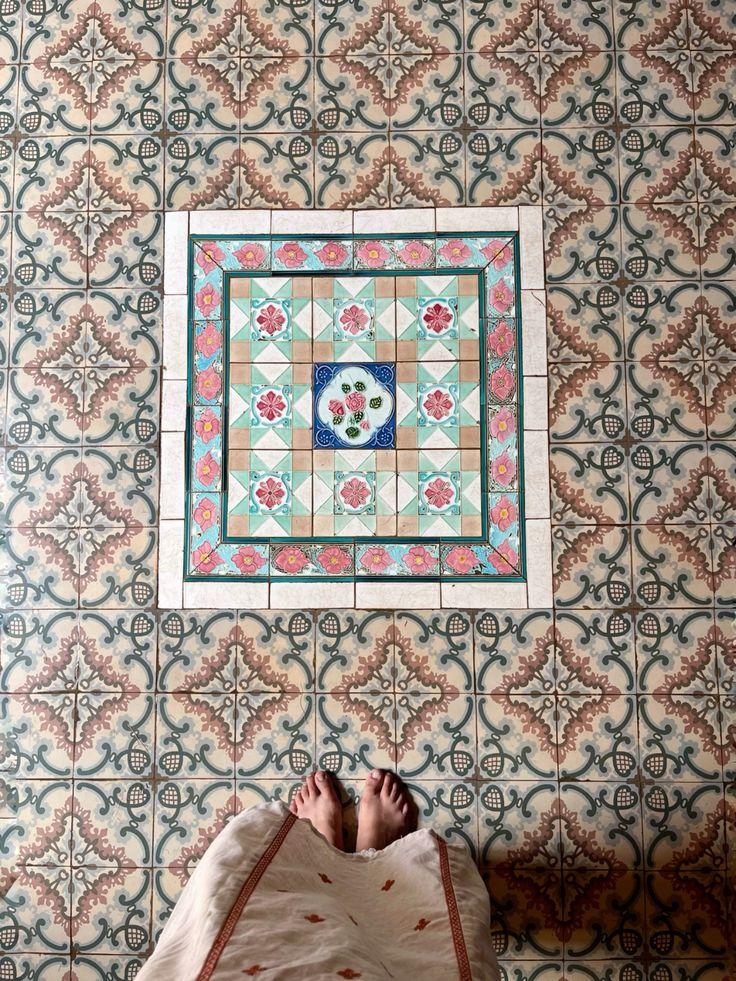 Pinterest
Pinterest
Wall Accents
Athangudi tiles can also be creatively used on walls, serving as eye-catching accent pieces in living rooms, kitchens, or even bedrooms. Installing these tiles on a feature wall can transform an ordinary space into a vibrant focal point, showcasing the intricate craftsmanship and unique patterns. Whether used in a geometric design or a floral motif, Athangudi wall tiles can enhance the overall decor and add a layer of sophistication to the interior. They can also be used to create a cozy nook or reading area, providing a visually appealing backdrop that invites relaxation.
Backsplashes
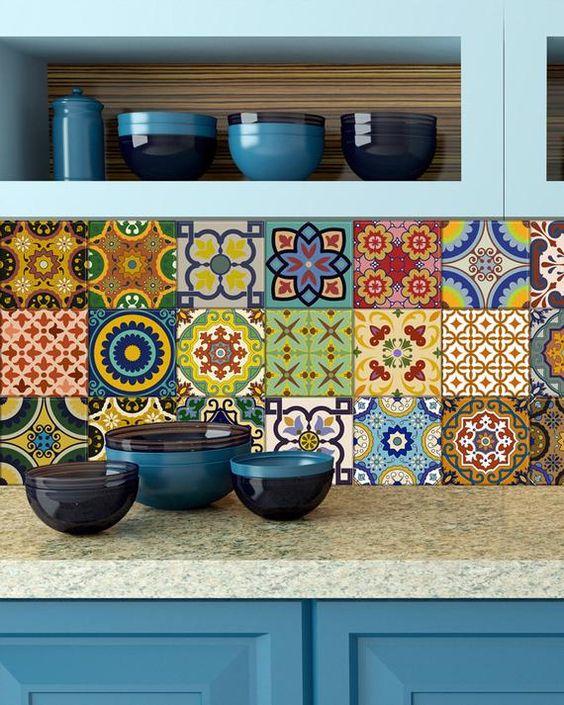 Pinterest
Pinterest
In kitchens, Athangudi tiles can add a splash of color and personality, transforming a mundane backsplash into a focal point. The tiles' intricate designs and vibrant colors can liven up the kitchen space, making it a more inviting area for cooking and entertaining. A well-designed Athangudi backsplash not only protects the walls from splashes and stains but also serves as a decorative element that ties the kitchen together. The combination of functionality and aesthetics makes these tiles an ideal choice for modern kitchens.
Bathrooms
While Athangudi tiles can be used on walls in bathrooms, caution is advised when considering them for bathroom floors due to potential slipperiness. Their smooth surface can be appealing, but it may pose a risk in wet conditions. However, using Athangudi tiles on bathroom walls can create a unique and personalized bathing space. Subtle patterns or monochromatic designs can add sophistication without overwhelming the senses, providing a serene atmosphere for relaxation.
Maintenance of Athangudi Tiles
Maintaining Athangudi tiles is relatively simple and straightforward, making them a practical choice for homeowners who appreciate both beauty and ease of care. These tiles are designed to age beautifully, enhancing their appeal over time.
Here's a detailed look at how to care for and maintain Athangudi tiles to ensure they remain vibrant and durable for generations.
Regular Cleaning
The key to maintaining the beauty of Athangudi tiles lies in regular cleaning. It is recommended to sweep the tiles frequently to remove dust, dirt, and debris that can accumulate on the surface. A soft broom or a vacuum cleaner with a brush attachment is ideal for this purpose, as it prevents scratching the tiles.
For deeper cleaning, mopping with warm water is effective. Adding a few drops of coconut oil to the water can enhance the tiles' natural sheen. The oil not only helps to maintain the luster of the tiles but also provides a protective layer that can repel dirt and stains. It is advisable to use a damp mop rather than a soaking wet one, as excessive water can seep into the grout lines and cause damage over time.
Avoiding Harsh Chemicals
Unlike many other types of tiles that may require chemical cleaners, Athangudi tiles can be maintained using natural products, making them an eco-friendly option. Harsh chemicals can strip the tiles of their natural oils and colors, leading to dullness and potential damage. Therefore, it is best to avoid abrasive cleaners, bleach, or acidic solutions. Instead, stick to mild soap or natural cleaning solutions that are gentle on the tiles.
Enhancing Longevity
One of the unique features of Athangudi tiles is that they become more attractive with use. The more they are walked on and cleaned, the shinier they become. Regular maintenance not only preserves their appearance but also contributes to their longevity. These tiles are known to last for generations with minimal upkeep, making them a sustainable choice for flooring.
Caution in Wet Areas
While Athangudi tiles are generally non-slip, caution is advised in wet areas, such as bathrooms. Although they can be used on walls and as accents in bathrooms, their smooth surface can become slippery when wet. It is important to ensure proper drainage and ventilation in these spaces to prevent water accumulation.
Conclusion
Athangudi tiles are more than just a flooring option; they are a celebration of craftsmanship, culture, and sustainability. Their unique designs, vibrant colors, and eco-friendly production methods make them a desirable choice for anyone looking to add character and charm to their home. With their timeless appeal and durability, Athangudi tiles continue to be a cherished element of interior design, bridging the past with contemporary living. Whether used in traditional or modern settings, these tiles are sure to leave a lasting impression.
explore further
Latest from Contemporary ideas
More from Innovations
Resources
Dwello, for every home buyer, is a way to go from 'I feel' to 'I know', at no extra cost.




